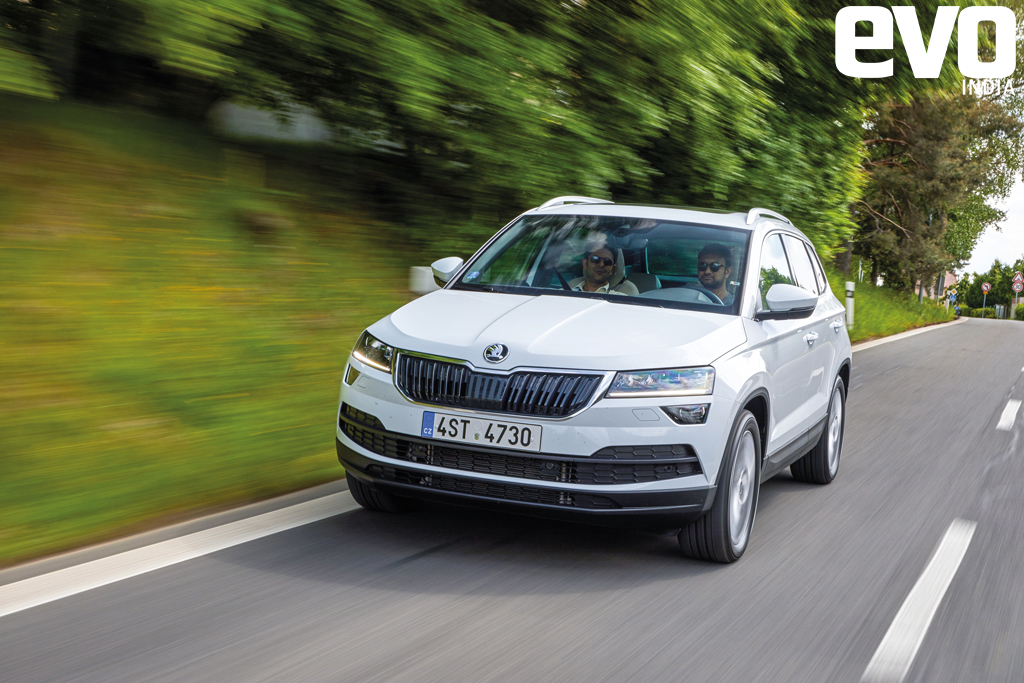Driven: Skoda Karoq
The Skoda Karoq doesn’t feel too far off the Kodiaq, and that isn’t something you should be worried about
 Driven: Skoda Karoq
Driven: Skoda KaroqIndia 2.0 is approaching. Skoda will be spearheading the engineering to localise the Volkswagen Group’s MQB-A0 platform for the Indian market, but that’s still some time away. We can expect the first India 2.0 SUVs to hit our markets only in 2021. Does that mean Skoda will kick its feet up and wait till then? Absolutely not. There are a few cars in the pipeline — an off-road biased Kodiaq Scout being one, and the updated Superb being the other. But by far, the most important one is this, the Karoq. Successor to the Yeti, this will be Skoda’s entry level SUV in India, at least until the Kamiq (or whatever the MQB-A0-IN SUV will be called in India) gets here. A quick spin in the Czech countryside gave us insight in to what you can expect.
What’s the Skoda Karoq about?
The first thing that struck me was how familiar everything was — right from the way it looked, the way the interior was laid out and even how it drove. The Karoq screams shrunken Kodiaq, and that can only be a good thing. The face is familiar, and you can tell it apart from the Kodiaq from the more squared off headlamps and trapezoidal fog lamps. In profile is where that Karoq looks very obviously different — it doesn’t have the sheer length of the Kodiaq. To give you perspective, the Karoq is 4382mm long, over 104mm shorter than a Volkswagen Tiguan and a good 315mm shorter than the Kodiaq. The taillamps are also styled slightly differently, and can help tell the two apart. On the inside too, things are familiar. The Karoq we were driving was specced with the digital information cluster that the Kodiaq L&K comes with, and the dash layout was pretty much the same too — a large, sensitive touchscreen flanked by vertically placed air-con vents.

How does it drive?
We got our hands on the diesel in the short while we had with the SUV. It’s the familiar 2-litre TDI in the Kodiaq mated to a DSG, and makes a similar 148bhp and 340Nm. Where the Kodiaq feels a little dull under hard acceleration, the Karoq feels more sprightly. It is smaller, and consequently lighter after all. More surprising than the acceleration, though, was how quiet the cabin was. The suspension felt stiff over the occasional bumps we encountered on the otherwise smooth roads around Prague, but that is also because the European-spec cars are set up stiffer than what we’re accustomed to in India. I can’t say much about its handling either, because I drove the car on straight highways, and narrow village roads, neither of which really allowed us to explore the dynamic capabilities of the Karoq. That said, the Kodiaq holds up well for its size and the Karoq shouldn’t be too different.

How’s the Skoda Karoq on the inside?
Space on the inside is good. The Karoq gets a rear bench comprising of three separate seats like the Yeti that can be adjusted to free up more legroom or recline to give you more space. The seats can also be removed completely, making the Karoq a van to free up more loading space, though nobody is going to configure it like that in India. With the seats gone, the Karoq has a total 1810 litres of boot space! It also gets a fair amount of equipment — this one had CarPlay and Android Auto connectivity, inductive charging for phones and had a sim card to surf the internet.
The Skoda Karoq is expected to come to India by mid-2020, and keep the Skoda portfolio alive till the full assault of India 2.0. Skoda will be bringing the Karoq as a CBU, so it will be a bit pricey, but we can only hope they’ve learnt their lessons from the Yeti and will spec it right for the price.


